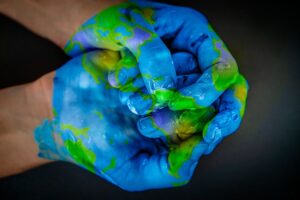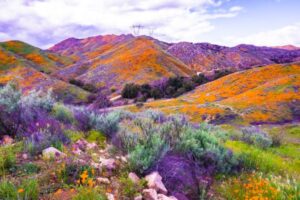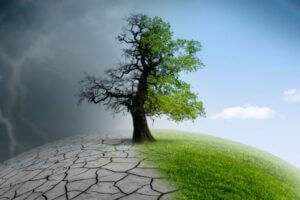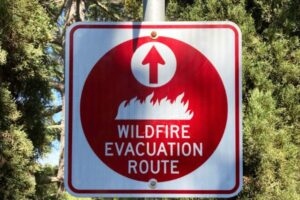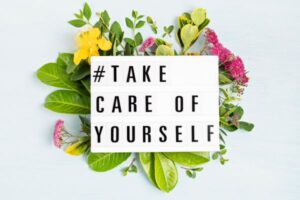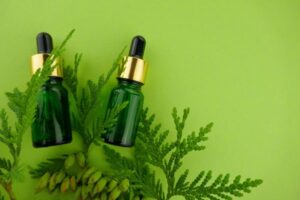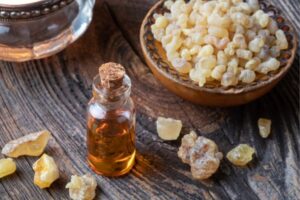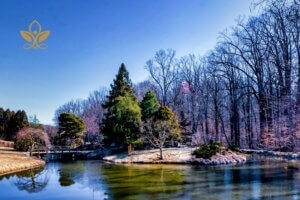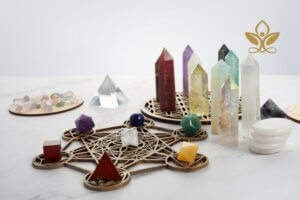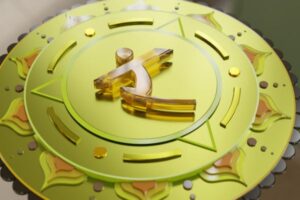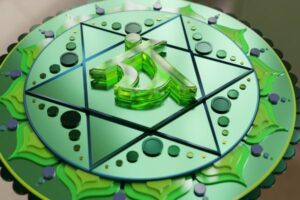Over 20-years ago, a Brazilian meteorologist stood in front of a group of scientists and announced that ozone layer depletion was a hoax. Science Magazine detailed his argument. He claimed sea salt and volcanoes offset the harsh effects of ozone layer depletion.
Mario Molina, an atmospheric chemist from the Massachusetts Institute of Technology had the task of speaking to this group next. Unfortunately, Molino explained to his audience that the stunning statements refuting ozone layer depletion are based on pseudoscience. Mario Molina informed the scientific community that the meteorologist’s statements were incorrect.
Statements like those only serve as a distraction to the issue of ozone layer depletion. Unfortunately, similar statements have persisted all the way to today. I think we all have the chore of cleaning up distracting pseudoscience by presenting real science to any audience who will listen. And so, let’s talk about the science of ozone layer depletion.
“Ozone is like a “Mother” of Earth… one who protects her child from harmful radiation…Our Mother.”
World Ozone Day
The Science of Ozone Layer Depletion
What is the ozone layer?
As with any discussion, it’s best to start at the beginning. What is the ozone layer? Our atmosphere consists of many layers. The name of the layer closest to the surface of the earth is the troposphere. This layer extends to about 6 miles above the ground. Meteorologists are most concerned with the troposphere, as weather systems develop in this layer of the atmosphere.
Proceeding, we have the layer of the earth’s atmosphere called the stratosphere which is where the ozone layer is located. The stratospheric layer stretches from 6 miles to about 18 miles above the earth. Commercial airlines fly at this altitude. Atmospheric ozone is traceable in large quantities at around 9 miles high. Microscopic molecules of oxygen make up the ozone layer. Tiny particles constantly form, dissipate, and reform. Changes in the amount of ozone are due to seasons, sunspots, and natural environmental shifts. Much of the activity is understandable and predicted in advance.
Scientists use instruments on the ground that communicate with satellites in space to measure the ozone layer. Surface-to-ground communications read the amount of ozone vertically for a specific region of the earth’s stratosphere. Scientists call these stratospheric ozone layer readings “column ozone” measurements.
What is so important about the ozone layer?
Firstly, is the ozone layer necessary? The answer is an enthusiastic “yes”! Why is the ozone layer necessary?
The ozone molecules in the stratosphere have a very special and essential property. They keep ultraviolet rays from the sun from reaching the earth. There are primarily three different types of ultraviolet energy particles: UVA, UVB, and UVC. While UVA energy particles are harmless, too much exposure to UVB and UVC is very harmful to humans. For example, extended exposure to UVB will result in a sunburn. And both UVB and UVC energy particles are harmful to plants. Even small amounts of UVC energy can damage the DNA of a plant.
The ozone layer keeps harmful ultraviolet energy particles from reaching the earth by absorbing the radiation. Earth’s stratospheric layer protects the earth by absorbing UVA, UVB, and UVC radiation so that they do not reach the earth’s surface. This process is necessary for life to continue to flourish on earth. Without this process, life on earth would become very difficult for humans, plants, and animals.
What is the science of ozone layer depletion?
The ozone layer has a natural annual cycle of depletion and recovery. According to Wikipedia, hemispheric column ozone measurements have steadily declined since the 1980s. To understand hemispheric column ozone, imagine a line drawn around the diameter of the earth that is halfway between the north and south pole. You would call the line at the equator 0 degrees latitude. This imaginary line divides the earth into two massive sections, the Northern Hemisphere and Southern Hemisphere.
Atmospheric scientists have recorded the cycles of depletion and recovery for decades. For instance, they usually record a reduction in ozone column measurements over Antarctica by as much as 70 percent during the Arctic spring. Tragically, scientists found that chlorine and bromine atoms released into the atmosphere cause ozone layer depletion. Chlorine and bromine atoms destroy ozone molecules. These atoms remain in the stratosphere and deplete the ozone layer. The earth’s atmosphere produces new ozone molecules naturally. But, chlorine and bromine can break down new ozone molecules faster than the atmosphere can naturally replenish them.
Southern hemisphere column ozone has typically given a worse column ozone measurement than the northern hemisphere. Column ozone measurements are lowest over Antarctica between September and October. Scientists refer to areas with low column ozone as “Ozone Holes”.
Fascinating facts about ozone holes.
Information provided by Nasa says that the term “ozone hole” is a bit of a misnomer. The name does not refer to an actual hole in the ozone layer. Scientists call locations with a low reading of column ozone “Ozone holes”. Ozone measurements fluctuate during the year. As a result, it is so important that scientists track these areas. It surprises many people to learn about the ozone hole’s location. You might suspect that the ozone hole would be located above industrial factories where air quality is the worst. Or, you might think India would have an ozone hole because IQAir lists over half of the 50 worst cities in air quality are located there. Alas, none of those cities have the lowest column ozone measurements.
Antarctica’s ozone hole is due to the cold temperature. Excessively cold temperatures help form polar clouds in the stratosphere. The atmosphere naturally stabilizes chlorine and bromine under normal temperature conditions. However, polar winds, dry air, and extended time periods of darkness contribute to abnormal conditions. Due to these conditions, total column ozone from September to October is often 50 percent lower than in other areas of the globe. The ozone hole is where the science of ozone layer depletion becomes critical.
What human activities contribute to ozone depletion?
Scientists have been measuring increased concentrations of chlorofluorocarbons in the atmosphere. Chlorofluorocarbons are compounds of chlorine, fluorine, bromine, and iodine. These chemicals are dangerous to the ozone layer because they break down ozone molecules. As chlorofluorocarbons break down ozone molecules, they can not absorb ultraviolet radiation. Instead, ultraviolet radiation produces chlorine atoms. Worse, scientists say that chlorofluorocarbons remain in the atmosphere for decades, others say they can remain for centuries.
Chlorofluorocarbons are man-made chemicals. Scientists call them ozone-depleting substances (ODS). Many are present in the products that humans use every day. As an example, in the ’80s, aerosol spray cans contained ODS. Aerosol sprays were the primary source for the release of chlorofluorocarbons into the atmosphere. Eventually, the government banned aerosol sprays. Alternatively, manufacturers developed non-ODS propellants. The alternatives proved to be better for the environment. Consequently, the marketplace widely adopted the alternatives. Yet, the United States still manufactures products containing ODS today. This includes products such as refrigerants and many solvents.
The National Aeronautics and Space Administration makes it clear that chemicals containing ODS are the primary cause of ozone depletion. Since chemicals containing ODS are manufactured by humans, we can conclude that humans are the primary cause of ozone depletion.
What does the science of ozone layer depletion say about its effect on humans?
Ozone molecules absorb ultraviolet energy from the sun. Chlorofluorocarbons released into the atmosphere break down ozone molecules in the stratosphere. Without healthy ozone molecules, more ultraviolet radiation from the sun will reach the earth’s surface. Union of Concerned Scientists describes the bleak outlook for humans, plants, and animals if ozone depletion continues at a high rate.
First, imagine all people, plants, and animals on earth exposed to increased levels of harmful ultraviolet radiation. The most dangerous type of radiation is UVB. Increased exposure to UVB will potentially produce health problems such as constant sunburn. In addition, UVB radiation will cause retina damage and increased instances of eye cataracts. In fact, the Union of Concerned Scientists projected that UVB radiation will cause permanent blindness in many people around the globe.
Secondly, increased exposure to ultraviolet rays will impact plant growth. Plants will not be able to flourish as rapidly as they do in the earth’s current environment. Under those circumstances, ultraviolet radiation will completely devastate the agricultural industry. Not to mention, it will impact every animal kingdom dependent on vegetation for its survival. This includes ocean life and human beings. Higher levels of ultraviolet radiation will alter every food chain. It will severely disrupt every ecosystem on every continent on earth.
Finally, instances of skin cancer will drastically increase. Conserve Energy Future.com projects that occurrences of skin cancer will increase by as much as 5% for every 1% that the ozone layer decreases. The bottom line: Continued depletion of the ozone layer will end all human life, plant life, and animal life on earth. Therefore, we must do whatever we can to prevent this from occurring.
Is anyone doing anything about ozone layer depletion?
After many years of “sounding the alarm” about ozone layer depletion, the scientific community has finally begun to generate worldwide attention about the issue. One reason ozone depletion gained worldwide attention is ozone-depleting substances (ODS) connection to global warming.
In fact, the European Commission on Energy and Climate change published a paper stating that some chlorofluorocarbons are 14,000 times stronger than carbon dioxide (CO2). CO2 is the primary greenhouse gas responsible for global warming. So, protecting the earth from chlorofluorocarbons will help guard against ozone layer depletion, and at the same time, will fight global warming.
For more than 35 years, people wanting to protector the ozone layer have celebrated World Ozone Day on the 16th of September. The purpose of the celebration is to inform people about the science of ozone layer depletion. The celebration also helps spread awareness about the ways that we all can help protect the zone layer by sharing an eCard like the one shown below.

The Montreal Protocol agreement of 1987.
The attention surrounding ozone layer depletion finally led to some action. The Montreal Protocol is an environmental agreement that bans the production of chlorofluorocarbons and other ozone-depleting substances. International leaders brought the agreement to the floor of the United Nations. It was an important step to finally take significant action against ozone layer depletion. Based on the European Commission, the Montreal Protocol agreement was the first of its kind to be unanimously signed by all leaders of the UN. The leadership approved the agreement on September 15, 1987.
Nearly 30 years later, the leaders of the United Nations adjusted the agreement to add hydro-fluorocarbons to the list of ozone-depleting substances. The UN leadership signed the adjusted agreement on October 15, 2016. The new terms set a deadline to reduce the production of chlorofluorocarbons and hydro-fluorocarbons. And the new terms established an aggressive goal. The new goal was to reduce ODS by more than 80 percent by the year 2040.
The Montreal Protocol brought international attention to the science of ozone Layer depletion. Nevertheless, we can do much more to protect the ozone layer from depletion. Moreover, people need to share the science of ozone layer depletion.
➼ Ways we can help protect the ozone Layers
Australian news outlets give a little good news. Apparently, the ozone layer has experienced a bit of self-repair in recent years. Self-repair is primarily due to global reductions in chlorofluorocarbons, hydro-fluorocarbons, and the banning of chemicals containing ozone-depleting substances.The United Nations environmental agency has reported that, if humans continue the effort to keep ODS out of the atmosphere, the ozone layer can make a full recovery by the year 2060. Be that as it may, for this self-repair to continue, every human has a part to play. We all must pitch in on the effort to protect the ozone layer. It will take everyone’s determination to continue the fight to make this full recovery a reality. Here are ways we can protect the ozone layer from depletion:
➼ Do not use gases that are dangerous to the ozone layer.
Chlorofluorocarbons (CFC) and hydro-chlorofluorocarbons (HCFC) are the primary contributors to ozone depletion. Therefore, we must avoid products containing these gases. Of course, this means avoiding methyl chloroform, methyl bromide, nitrous oxide, and halogenated hydrocarbon. You might think these gases are easy to avoid. However, you might be surprised to find out which products you use every day contain these gases. Methyl chloroform, for example, is used in spot-cleaners and most solvents. What’s more, methyl bromide is used by farmers as a pesticide and nitrous oxide is found in cans of whipped topping.
➼ Do not use cleaning products that contain ODS.
This may come as a surprise, but many cleaning products you buy contain ozone-depleting substances. Read the labels and avoid anything that contains (CFCs) such as methyl chloroform (CH3CCl3), or bromochloromethane (CH2BrCl). Instead, search for non-toxic and eco-friendly cleaning products that do not pose a danger to the environment or the ozone layer. Non-toxic products include vinegar.
➼ Do not buy aerosol products that contain ODS.
The United States banned aerosols containing ODS nearly 45 years ago. Nevertheless, overseas markets still produce products containing ODS. It is up to us consumers to abandon these products completely. Never buy any aerosol products that contain ozone-depleting substances
➼ Buy products produced locally.
As consumers, we protect the ozone layer by purchasing products produced locally. This is especially important when purchasing perishable products bought from a market. For instance, store owners cannot ship perishable products in large bulk orders. Instead, owners must ship perishable products in smaller quantities more frequently to retain their freshness. By purchasing products produced locally, we get fresher products and cut back on the toxins filling the atmosphere.
➼ Lower the use of your cars.
Transportation of perishable products is a major contributor to nitrous oxide emissions. Of course, produce trucks are not the only cars on the road. Far from it. We can all help the ozone layer by lowering the use of our cars. Instead of driving your car to your next destination, consider taking public transportation instead. Another alternative is to take a bicycle. Nowadays, you don’t’ even have to own a bicycle to commute on one. Many cities have self-serve kiosks where you can rent a bike for the day. Or, simply walk. This will benefit the environment, and it will benefit you!
➼ Make sure your air conditioner receives regular maintenance.
Most refrigeration equipment also contains large amounts of ODS. In fact, you will inadvertently release damaging chemicals into the atmosphere if your air conditioner malfunctions. Regular maintenance is the only way to guard against this disaster. Most refrigeration equipment contains large amounts of ODS. You will inadvertently release damaging chemicals into the atmosphere if your air conditioner malfunctions. Regular maintenance is the only way to guard against this disaster.
Resources for this article.
- Wikipedia
- European Commission on Energy, Climate change, Environment Climate Action
- Union of Concerned Scientists
- Conserve Energy Future.com
- United States Environmental Protection Agency (EPA)
- National Aeronautics and Space Administration
- Science Magazine
- IQAir
Conclusion
It is our wish that you find this post enlightening and helpful. If you have any questions or suggestions, we love to hear from you in the comments below. Also, kindly accept our invitation to join our group on Facebook to surround yourself with kindred spirits and post your encouraging messages.




